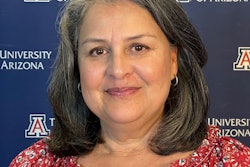When Consuelo Arellano got a postcard from South Texas College this summer about freshman orientation week for her daughter, it wasn’t by accident. The notice advised Arellano, a mother of two adult children, that student attendance was mandatory and that parents should attend.
The unusual request for parental participation was part of a stepped-up effort by the predominantly Hispanic community college in McAllen to enhance the retention and graduation prospects for its first-generation college students by making the college experience more of a family affair from the beginning.
Such parent orientations are not unusual at four-year schools, but the strategy is fairly new for open-access institutions that serve such disparate constituents as first-time undergraduates and adult learners. Like their four-year counterparts, community colleges focus on college completion, experts say, and South Texas is among those colleges that discovered the importance of demystifying the higher education process for Latino parents who’ve never traveled that path.
“It’s a really good strategy. Trying to bring the parents in early on is important,” says Dr. Patricia Gándara, co-director of the Civil Rights Project at the University of California, Los Angeles. She recalls a student survey that indicated the top impediment to keeping Hispanic students in the college pipeline was a lack of information for parents who influence students’ college-going decisions. “‘Can you please give this information to my parents?’ was the leading request of respondents,” Gándara says.
Emily Calderon, director of research at the San Antonio-based Hispanic Association of Colleges and Universities, says that research documenting the value of parental involvement with their children in grades K-12 suggests it would probably work in many situations at the college level.
“It would be great if we could replicate this,” Calderon says of the South Texas program.
The “First Year Connection” orientation, now in its third year, has turned into a real drawing card at South Texas, attracting this past summer more than 900 family members and some 3,000 students, the school reported.
“It was good,” Arellano says of the near three-hour session she attended. “I got a lot of information on how my child is preparing for school. We need to be more involved in the education of our children,” she says, adding that some parents of first-generation college students do not have a good understanding of what college is all about. The orientation gave her more insight into what was in store for her daughter, Anahi, 18, and how she could help.
Testimonials like Arellano’s gives officials at South Texas encouragement that they may be onto an idea with some long-term potential for boosting the school’s graduation rate of 13 percent, which excludes those who transfer out or take non-degree classes. South Texas is a five-campus community college serving more than 28,000 students, more than 60 percent being first in their families to attend college and more than 75 percent on some type of financial aid.
The “First Year Connection” sessions, repeated several times throughout orientation week, include personal success stories from guest speakers, advice on class behavior, tips on college services and how to stay informed, and a parent/family “breakout” in which advice is given on the rigors of college and how to stay involved.
When the session ends, parents and students are invited to meet with college staffers to learn more about student clubs, peer mentoring, counseling services, disability services and other activities. “It’s like the flood gates open,” says Mike Shannon, interim associate dean in the Department of Student Life, referring to the scores of people who take officials up on the invitation to learn more.
Officials at South Texas say their efforts appear effective. School data on the 2008 class of freshmen showed that 68.5 percent of those who attended orientation stayed for the full year, compared with 51.3 percent of those who did not attend the mandatory orientation. For the fall of 2009, data showed that 65 percent of those first-generation college freshmen who attended mandatory orientation stayed for the first year.
Shannon says he and his colleagues are working to make the parental involvement a yearlong experience. They also plan to tweak orientation to give parents more time for financial aid questions and to offer a parents’ session in Spanish only.
“The real light bulb here is parents don’t know college won’t be the same way as elementary and high school,” Shannon says, adding that his parents never went to freshman orientation when he started college. “We want the parents to be involved. We need the parents to be involved. We want them to be part of the process.”















